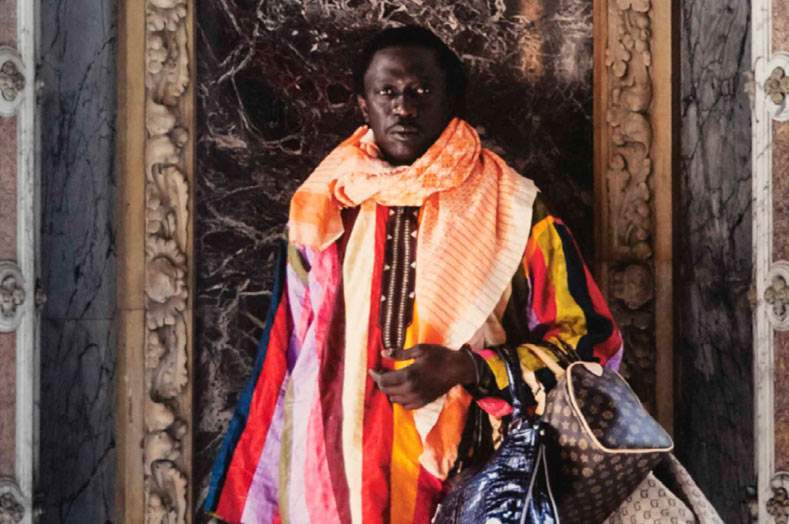The wave of protests of the Black Lives Matter movement, which has sprung up in the United States and around the world following the killing of George Floyd and other African-American citizens at the hands of the police, does not leave museums indifferent, not even in Italy, and many have begun to take a stand and, in some cases, even to do communicative and popularizing work around the claims of the African-American (and African in general) community, passing through art.
The basis for reflection was provided as early as last June 3 by theInternational Council of Museums (ICOM), the body representing museums around the world, which called the assassination of George Floyd “senseless,” singling it out as “the latest in a painful list,” and reminded that there is still a long way to go to achieveracial equality, but also that the time to act is now, especially for museums: museums, according to ICOM, cannot be neutral to what is happening, cannot be divorced from their social context, power structures, and the struggles of their communities. Museums, in other words, have a responsibility and a duty to fight against racial prejudice at every level, starting with the stories they tell and ending with the way staff are treated.
“The conditions of our democracy,” said Lonnie G. Bunch, secretary of the Smithsonian in Washington and co-chair of ICOM’s U.S. chapter, “are fragile and precarious. Once again, we are struggling to derive meaning from events that have no meaning. Once again, we witness the tribulated history of racial violence in our country, from Freddie Gray to Eric Garner, from Sandra Bland to Trayvon Martin. Once again, we try to resist as best we can, either by suffering in silence, or by participating in the protests, or by getting involved in the conversations that ignite all our emotions. Once again, we try to explain to our children what cannot be explained. Once again, we pray for justice and peace.” The story, Bunch emphasizes, “is a guide to a better future and shows that we can become a better society, but only if each of us asks each other and the institutions responsible for administering justice.” The ICOM USA co-president concludes by wondering if we will all “join the struggle to demand justice and equality” and “hear the call of those courageous figures throughout history who have stood up against slavery and marched for rights.”
Among the first to take up the call in Italy is the Egyptian Museum in Turin, which quoted ICOM’s words to remind us that “museums aspire to be places that enhance our ability to understand the world and contribute to improving awareness of human dignity, social justice and global equality.” The Varese Tactile Museum also takes sides, stating that “our museum is not neutral, and is against all forms of discrimination and racism.” The Barberini Corsini National Galleries join the appeal as, it says on their social channels, they “fight each and every inequality, discrimination and prejudice, on whatever premise they might manifest themselves.” Similar positions were also taken by the Royal Palace of Caserta, the Archaeological Museum of Venice, and the Archaeological Museum of Cagliari.
For the Milan Triennale, President Stefano Boeri together with members of the scientific committee (Umberto Angelini, Lorenza Baroncelli, Lorenza Bravetta and Joseph Grima) took a direct stance: “it is deeply inappropriate,” they wrote on Instagram, “to discuss the future of humanity, strategies to defeat the climate crisis and the consequences of the pandemic without considering the enormous responsibilities that unfortunately still fall on our shoulders. Racism, hidden or overt, is the real disease that humiliates and makes a mockery of any claim to evolution of the human species.”
Then there are museums that have gone further and woven connections with works in their collections or that have transited from their venues through temporary exhibitions. This is the case, for example, with Palazzo Grassi, which is relaunching the images of LaToya Ruby Frazier, the star of a 2018 exhibition at Punta della Dogana: she is a young African-American artist who “raises political and identity issues that are more relevant than ever, portraying herself and her family in her hometown in Pennsylvania,” in Braddock, which is “a poor town and now largely African-American, it is one of the industrial areas that suffered an economic collapse when heavy industries closed or moved away.”
The same means also for MAXXI in Rome, which, on Instagram, devotes its entire communication to the issues raised by the Black Lives Matter movement: every day last week, the Roman museum posted on its account (@museomaxxi) a work from its collection that connects to the themes of prejudice and discrimination, and on the museum’s own website (maxxi.art) has created an in-depth page with detailed fact sheets related to all the published works (eight: the artists are Kendell Geers, Bouchra Khalili, Nina Fischer & Maroan El Sani, Kiluanji Kia Henda, Sarah Waiswa, John Akomfrah, Yinka Shonibare, and Robin Rhode). The intent is to give voice to artists “who put at the center of their message hope, denunciation, and the reality of a global problem that can no longer be ignored.” MAXXI, said director Hou Hanru, “has never bowed in the face of difficulties, but this time we kneel, for our brothers and sisters, to rise up together, forever.” An idea shared by many other Italian museums.
Pictured: Kiluanji Kia Henda, Le Merchand de Venise, detail (2010; digital print; Rome, MAXXI)
 |
| Black Lives Matter, what position are Italian museums taking? |
Warning: the translation into English of the original Italian article was created using automatic tools. We undertake to review all articles, but we do not guarantee the total absence of inaccuracies in the translation due to the program. You can find the original by clicking on the ITA button. If you find any mistake,please contact us.